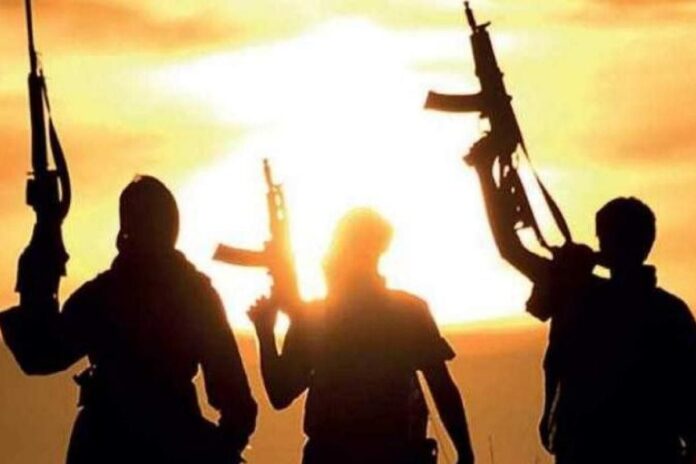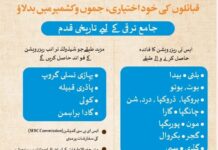Terror outfits such as the Lashkar-e-Toiba, Jaish-e-Mohammed, Hizbul Mujahideen, ISIS and Al-Qaeda continue to be active in the Indian subcontinent, with Jammu and Kashmir, Northeast India and Maoist-hit regions in central India being hit by terror activities, according to the latest report on terrorism released by the US State Department.The Indian Government had made significant efforts to detect and disrupt operations of major terrorist organisations within its borders, but threats persist, the report titled ‘2020 Country Reports on Terrorism’ said.“In 2020, terrorism affected the Indian Union Territory of Jammu and Kashmir (J&K), Northeast India and regions in central India. Major terrorist groups have been active in India, including the Lashkar-e-Toiba, Jaish-e-Mohammed, Hizbul Mujahideen, ISIS and Al-Qaeda in the Indian subcontinent,” the report, which is published annually, said on Thursday.The report cites the example of crackdown by the Indian security agencies on several key members of Al-Qaeeda-affiliated outfit Ansar Ghazwat-ul-Hind in Jammu & Kashmir.In September 2020, the United States and India held the 17th meeting of the Counterterrorism Joint Working Group and Third US-India Designations Dialogue.In December, India had proposed holding another Quad counterterrorism tabletop exercise along with the United States, Australia, and Japan, the report said.Although insurgent groups continue to operate in the Northeast, levels of terrorist violence have decreased.The report also examined the decreasing presence of Khalistan groups in the country.“The many organisations involved in the Sikh separatist (Khalistan) movement have not engaged in significant recent activities within India’s borders,” it said.Observing that the National Security Guard has improved its response time and reduced past dependence on other agencies for logistics, the US State Department report insisted that challenges including budget constraints and dependence on temporary details and volunteers from the armed forces remained.Noting that Indian security agencies were effective in disrupting terror threats, gaps remained in inter-agency intelligence and information sharing, the report said.In the absence of a National Counter Terrorism Centre, the Indian Multi-Agency Centre (MAC) collaborates with the United States on exchanging terrorist screening information and conducting real-time collation and sharing of intelligence among federal and state security agencies.Several Indian States have established State-level MACs to disseminate terrorism information to law enforcement, it said.“Indian security forces demonstrate limited capacity to patrol and secure extensive maritime and land borders.India is implementing UNSCR 2396 to improve detection and deterrence of terrorist travel by using watchlists, implementing biographic and biometric screening at ports of entry, and expanding information sharing,” the report added.US Secretary of State Antony Blinken, in the 2020 Country Reports on Terrorism issued on Thursday, said that regionally, terrorist groups continued to operate from Pakistan.“Groups targeting Afghanistan — including the Afghan Taliban and affiliated Haqqani network (HQN), as well as groups targeting India, including Lashkar-e-Toiba (LeT) and its affiliated front organisations, and Jaish-e-Mohammed (JeM) — continued to operate from Pakistani territory,” according to the report.Pakistan did not take action against other known terrorists such as JeM founder and UN-designated terrorist Azhar and 2008 Mumbai attack “project manager” Mir, both of whom are believed to remain free in Pakistan, the report said.In February and again in November, a Lahore anti-terrorism court convicted LeT founder Hafiz Saeed on multiple counts of terrorism financing and sentenced him to five years and six months in prison, the report noted.The US report acknowledged that Pakistan made additional progress in 2020 towards completing its Financial Action Task Force (FATF) Action Plan, but did not complete all Action Plan items, and remained on the FATF “gray list”.The report also noted that some madrassas in Pakistan continued to teach violent extremist doctrine.“While the Government continued efforts to increase madrassa regulation, some analysts and madrassa reform proponents observed that many madrassas failed to register with the Government, provide documentation of their sources of funding, or comply with laws governing acceptance of foreign students,” it said.Highlighting the US-India cooperation, the report said that the United States continues to build its strategic partnership with the Government of India, including through bilateral engagements such as the 17th Counterterrorism Joint Working Group and Third Designations Dialogue in September, as well as the third 2+2 Ministerial Dialogue in October.It also commended the Indian counterterrorism forces, including the National Investigation Agency (NIA), for actively detecting and disrupting transnational and regional terror forces.“Indian counterterrorism forces, at the federal and state levels, actively detected and disrupted transnational and regional terror forces.“The National Investigation Agency (NIA) examined 34 terrorism-related cases related to ISIS and arrested 160 persons, including 10 alleged al-Qaeda operatives from Kerala and West Bengal, in September,” the report said.
ABOUT US
SACH® - raising the voice of people of Jammu Kashmir since 1940. We are Publishing House of Daily Sach(Urdu Daily). Sach News Network, is one of the oldest News Group of India having its office in Jammu Kashmir, Delhi. Reach us for Latest news on politics, sports, crime, education, real estate, business entertainment and much more. We provide you with the latest breaking news and videos straight from the ground zero.
Contact us: thedailysach@gmail.com
© Sach News Network 2011-2024 | Maintained by Sach Info Tech





